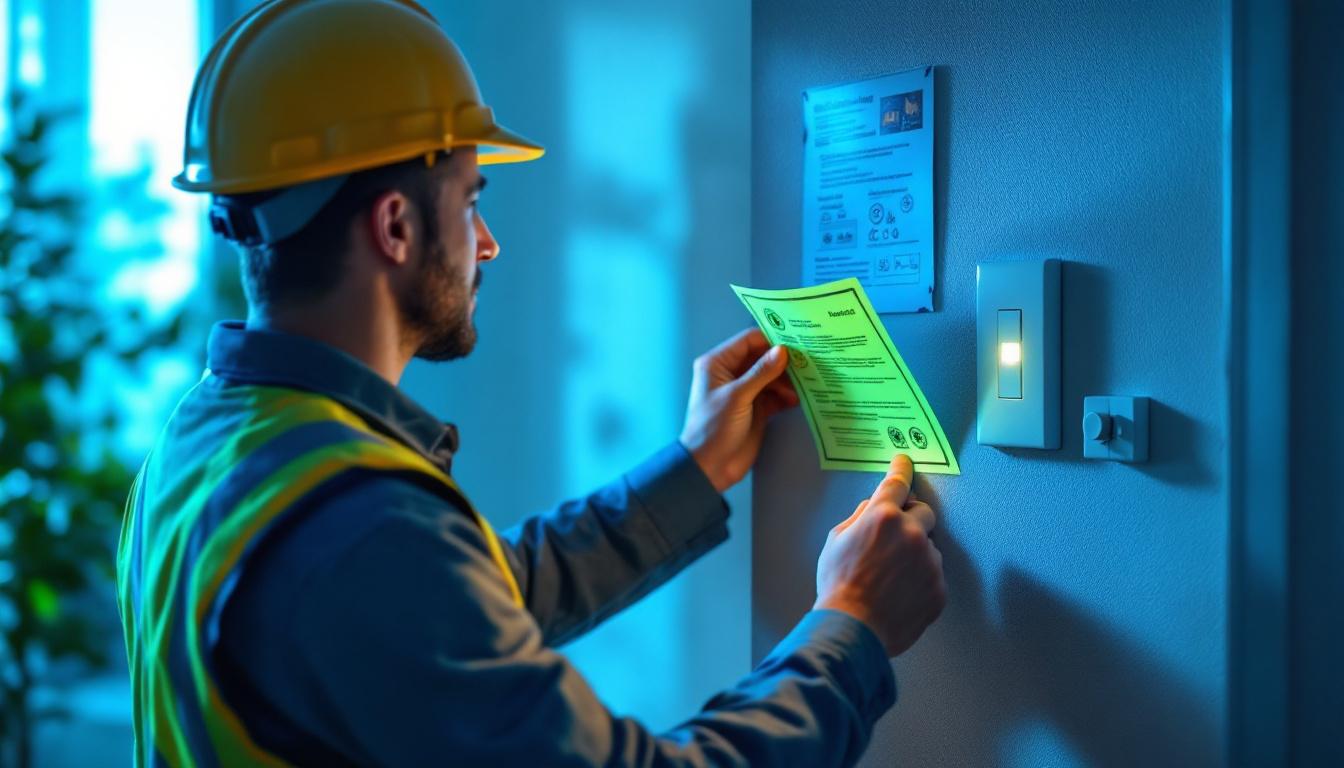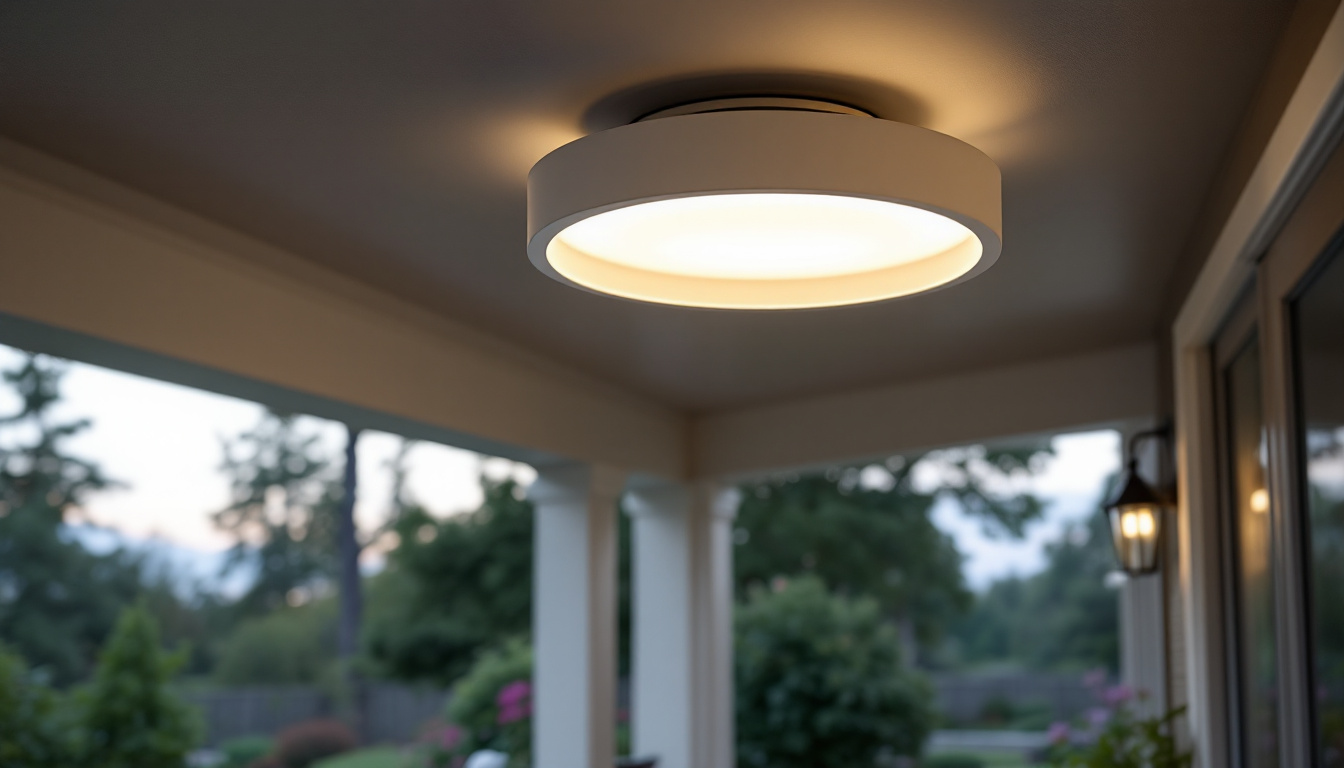
Lighting contractors play a pivotal role in ensuring that residential and commercial spaces are not only aesthetically pleasing but also compliant with various regulations. Understanding the nuances of compliance, especially when it comes to light switches and their associated systems, is crucial for any contractor in the field. This article aims to illuminate the essential aspects of compliance related to light switches, providing contractors with the knowledge they need to navigate this complex landscape effectively.
Compliance in the lighting industry encompasses a wide range of regulations and standards that ensure safety, energy efficiency, and accessibility. These regulations are often set forth by national and local governing bodies and can vary significantly depending on the location and type of project. For lighting contractors, staying informed about these compliance requirements is not just a legal obligation but also a means to enhance the quality of their work.
Among the most critical regulations that lighting contractors must be aware of are the National Electrical Code (NEC), the Americans with Disabilities Act (ADA), and various energy efficiency standards. The NEC outlines the safe installation of electrical wiring and equipment, while the ADA ensures that lighting installations are accessible to individuals with disabilities. Energy efficiency standards, such as those set by the Department of Energy, mandate the use of energy-saving technologies in lighting systems.
Each of these regulations has specific requirements that can impact the design and installation of lighting systems. For example, the NEC may dictate the types of circuits that can be used for specific applications, while the ADA may require certain lighting levels in public spaces to ensure visibility for all users. Understanding these regulations is essential for contractors to avoid costly mistakes and ensure the safety and satisfaction of their clients.
In addition to national regulations, local building codes can impose additional requirements that contractors must adhere to. These codes can vary widely from one municipality to another, reflecting local priorities and conditions. For instance, a city with a strong emphasis on sustainability may have stricter energy efficiency requirements than a neighboring area.
Contractors should familiarize themselves with the local codes applicable to their projects, as non-compliance can lead to fines, project delays, and even legal issues. Engaging with local building departments early in the planning process can help contractors understand the specific requirements they need to meet, ensuring a smoother project execution.
When it comes to light switches, compliance involves several specific considerations that lighting contractors must keep in mind. These include the type of switches used, their placement, and their accessibility. Each of these factors plays a significant role in ensuring that installations meet both safety standards and user needs.
The choice of light switches can significantly impact compliance. Standard toggle switches, dimmer switches, and smart switches each have different compliance requirements. For instance, smart switches may need to meet specific energy efficiency standards and must be compatible with other smart home devices to function correctly.
Moreover, contractors should be aware of any restrictions on the types of switches that can be used in certain environments. For example, in commercial settings, switches may need to be rated for higher usage levels or must be weatherproof if installed outdoors. Understanding these distinctions is essential for selecting the right products for each project.
The placement of light switches is another critical compliance consideration. The ADA outlines specific guidelines for the height and location of switches to ensure they are accessible to individuals with disabilities. Generally, switches should be installed between 15 and 48 inches above the floor, allowing easy access for all users.
Additionally, switches should be located near the entrance of a room, ensuring that users can easily turn on lights upon entering. Contractors should also consider the layout of the space and the potential for obstructions that may hinder access to switches, such as furniture or doorways. By prioritizing accessibility in their designs, contractors can create more inclusive environments.
Energy efficiency is a significant focus in the lighting industry, with many jurisdictions mandating specific standards for lighting installations. These standards not only help reduce energy consumption but also contribute to lower utility costs for clients. Contractors must stay informed about the latest energy efficiency requirements to ensure compliance and provide the best solutions for their clients.
Energy codes, such as those outlined in ASHRAE 90.1 or the International Energy Conservation Code (IECC), establish minimum efficiency requirements for lighting systems. These codes often specify the types of fixtures, the wattage allowed, and the overall design of lighting systems to promote energy savings.
Contractors should conduct thorough research on the energy codes applicable to their projects, as compliance can vary based on factors such as building type and occupancy. By adhering to these codes, contractors can not only avoid penalties but also position themselves as leaders in energy-efficient lighting solutions.
Choosing energy-efficient products is an essential aspect of compliance. Lighting contractors should prioritize the use of LED fixtures, which consume significantly less energy than traditional incandescent or fluorescent lights. Additionally, many jurisdictions offer incentives for using energy-efficient products, making them a more attractive option for clients.
Contractors should also be aware of the importance of proper installation techniques to maximize the efficiency of lighting systems. This includes ensuring that fixtures are correctly positioned and that lighting controls, such as timers and occupancy sensors, are integrated into the design. By focusing on energy efficiency, contractors can enhance the overall value of their services and contribute to a more sustainable future.
The rise of smart lighting technology has introduced new compliance considerations for lighting contractors. While these systems offer enhanced functionality and energy savings, they also come with specific requirements that must be met to ensure compliance with regulations.
Smart lighting systems typically involve the use of connected devices that can be controlled remotely through smartphones or home automation systems. These systems often include features such as dimming capabilities, color temperature adjustments, and scheduling options, all of which can enhance user experience.
However, contractors must ensure that these systems comply with relevant electrical codes and energy efficiency standards. This may involve verifying that smart devices are properly rated for their intended use and that they integrate seamlessly with existing electrical infrastructure. Understanding the technical specifications and compatibility requirements of smart lighting systems is essential for successful installations.
As smart lighting systems become more prevalent, concerns about data privacy and security have emerged. Contractors must be aware of the implications of installing connected devices that collect and transmit data. Ensuring that these systems are secure and compliant with data protection regulations is crucial to maintaining client trust.
Contractors should educate themselves on best practices for securing smart lighting systems, including the use of strong passwords, regular software updates, and secure network configurations. By prioritizing data security, contractors can provide clients with peace of mind while enhancing the functionality of their lighting systems.
To navigate the complexities of compliance effectively, lighting contractors can adopt several best practices that promote adherence to regulations and enhance the quality of their work.
One of the most effective ways to ensure compliance is to stay informed about the latest regulations and industry standards. This can involve attending workshops, participating in industry associations, and regularly reviewing updates from relevant governing bodies. By remaining knowledgeable about compliance requirements, contractors can make informed decisions and avoid potential pitfalls.
Additionally, subscribing to industry publications and following thought leaders in the field can provide valuable insights into emerging trends and best practices. Staying connected with peers can also facilitate the sharing of information and experiences, further enhancing compliance efforts.
Engaging with clients throughout the project lifecycle is essential for ensuring compliance. Contractors should take the time to discuss compliance requirements with clients, helping them understand the importance of adhering to regulations. This collaborative approach not only fosters trust but also empowers clients to make informed decisions about their lighting systems.
Moreover, contractors should encourage clients to ask questions and voice any concerns they may have regarding compliance. By addressing these issues upfront, contractors can mitigate potential problems and ensure a smoother project execution.
Thorough documentation is a vital aspect of compliance. Contractors should maintain detailed records of all project-related activities, including design plans, product specifications, and compliance checks. This documentation can serve as a valuable resource in the event of inspections or audits, providing evidence of adherence to regulations.
Additionally, keeping records of communications with clients, suppliers, and regulatory bodies can help contractors demonstrate their commitment to compliance and accountability. By prioritizing documentation, contractors can safeguard their reputation and protect themselves from potential legal issues.
Compliance in the lighting industry is a multifaceted challenge that requires lighting contractors to stay informed and proactive. By understanding the key regulations, focusing on energy efficiency, and prioritizing accessibility, contractors can ensure that their installations meet the highest standards of safety and quality.
As the industry continues to evolve, embracing new technologies and best practices will be essential for contractors looking to thrive in a competitive landscape. By prioritizing compliance, contractors can enhance their reputation, build client trust, and contribute to a more sustainable future in lighting.
Ready to elevate your lighting projects while adhering to the latest compliance standards? Look no further than LumenWholesale for all your lighting needs. Our extensive selection of top-quality, spec-grade lighting products is designed to meet the highest industry standards, ensuring you deliver reliable and high-performance lighting solutions. With unbeatable wholesale prices and the convenience of free shipping on bulk orders, you can trust LumenWholesale to provide the best value without any hidden fees. Don’t compromise on quality or affordability. Wholesale Lighting at the Best Value is just a click away. Experience the difference with LumenWholesale today.

Discover strategies to boost profitability in lighting installations by choosing the right light bulbs.

Discover how to future-proof your lighting projects with outdoor flush mount ceiling lights.

Discover why purchasing LED tape lights in bulk from local distributors might not be the best choice.

Discover the art of interior lighting with expert insights for lighting contractors.